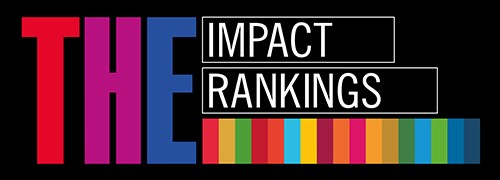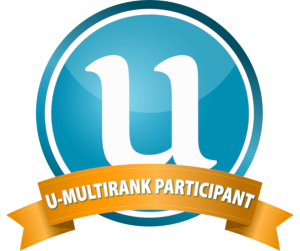.
Orthodontics III
Study Course Description
Course Description Statuss:Approved
Course Description Version:4.00
Study Course Accepted:09.07.2024 08:24:39
| Study Course Information | |||||||||
| Course Code: | ORK_013 | LQF level: | Level 7 | ||||||
| Credit Points: | 2.00 | ECTS: | 3.00 | ||||||
| Branch of Science: | Clinical Medicine | Target Audience: | Dentistry | ||||||
| Study Course Supervisor | |||||||||
| Course Supervisor: | Gundega Jākobsone | ||||||||
| Study Course Implementer | |||||||||
| Structural Unit: | Department of Orthodontics | ||||||||
| The Head of Structural Unit: | |||||||||
| Contacts: | Riga, 20 Dzirciema Street, ortodonkat rsu[pnkts]lv, +371 67815279 rsu[pnkts]lv, +371 67815279 | ||||||||
| Study Course Planning | |||||||||
| Full-Time - Semester No.1 | |||||||||
| Lectures (count) | 2 | Lecture Length (academic hours) | 2 | Total Contact Hours of Lectures | 4 | ||||
| Classes (count) | 9 | Class Length (academic hours) | 3 | Total Contact Hours of Classes | 27 | ||||
| Total Contact Hours | 31 | ||||||||
| Study course description | |||||||||
| Preliminary Knowledge: | Medical genetics, human molecular biology, normal physiology, clinical pharmacology in dentistry, stomatological problems in clinical rheumatology, internal diseases with propedeutics, human anatomy, dental anatomy, embryology, histology, maxillofacial surgery, oral surgery, pathology, psychosomatic medicine and psychotherapy, biostatistics, dental prosthetics and clinic, integrated dentistry, oral, maxillofacial diagnostic radiology, paediatric therapeutic dentistry, prevention in dentistry, public health care in dentistry, therapeutic dentistry, preclinical and clinical course in endodontics, preclinical and clinical course in periodontology, cariology, biomaterials in dentistry, communication culture in dentistry, obstructive sleep apnea syndrome, paediatric oral and maxillofacial surgery, otorhinolaryngology for dentists, paediatrics. Orthodontics I and II courses. | ||||||||
| Objective: | To provide knowledge about the basic principles and methods of orthodontic treatment, identify the need for treatment and referring to an orthodontist. To teach how to be a full-fledged member of an interdisciplinary team, where one of the specialists is an orthodontist. | ||||||||
| Topic Layout (Full-Time) | |||||||||
| No. | Topic | Type of Implementation | Number | Venue | |||||
| 1 | Basic principles of care for patients with clefts of the face and jaws. The role of orthodontist in the care of patients with facial clefts. | Classes | 1.00 | auditorium | |||||
| 2 | Types of tooth movement as a result oforthodontic forces, orthodontic treatment with aligners.. Main components and mode of operation. Indications for treatment with aligners. | Classes | 1.00 | auditorium | |||||
| 3 | Side effects of orthodontic treatment. Reversible and irreversible damage. | Classes | 1.00 | auditorium | |||||
| 4 | Orthodontics for adult patients. Differences between adult and adolescent orthodontic treatment. Treatment goals in treating adult patients. | Classes | 1.00 | auditorium | |||||
| 5 | Interdisciplinary aspects of orthodontic treatment. Periodontal treatment before, during treatment and after tooth movement in adult patients. Pathological tooth movement and orthodontic treatment thereof. Orthodontic care of dental injuries. | Classes | 1.00 | auditorium | |||||
| 6 | Recurrence and retention. The concept of recurrence in orthodontics and orthognathic surgery, factors influencing recurrence, the impact of ageing on recurrence. | Classes | 1.00 | auditorium | |||||
| 7 | Emergency situations in orthodontic practice – first aid in case of appliance damage. Working with models. | Classes | 1.00 | auditorium | |||||
| 8 | Test. Part 2 of the cumulative examination: analysis of clinical cases. Feedback on clinical case analysis. | Classes | 2.00 | auditorium | |||||
| 9 | Tooth replacement in growing individuals. | Lectures | 1.00 | auditorium | |||||
| 10 | Tooth movement with orthodontic appliances: indications and biomechanical aspects. | Lectures | 1.00 | auditorium | |||||
| Assessment | |||||||||
| Unaided Work: | Individual work for the preparation of a presentation on periodical literature and clinical cases, learning the theoretical material of the seminars. In order to evaluate the quality of the study course as a whole, the student must fill out the study course evaluation questionnaire on the Student Portal. | ||||||||
| Assessment Criteria: | In practical classes and seminars – high quality of oral answers regarding theoretical material, high quality answers to short test work questions, active participation in the analysis of clinical cases, high-quality presentation of clinical cases, high-quality presentation of periodical literature, quality of oral answers to the seminar topic. At the end of the 2nd semester of the V study year, Test and Part 2 of the state cumulative examination: clinical case analysis. During the examination period, the knowledge gained in the Orthodontics course is tested in the State examination with 15% of the multiple-choice questions in the written exam and 1 short question on the interdisciplinary aspects of orthodontic treatment. | ||||||||
| Final Examination (Full-Time): | Exam | ||||||||
| Final Examination (Part-Time): | |||||||||
| Learning Outcomes | |||||||||
| Knowledge: | • there will be necessary knowledge of the interdisciplinary principles of orthodontic treatment and the peculiarities of orthodontic treatment of adult patients • will have knowledge about the iatrogenic factors of orthodontic treatment; • will have the necessary knowledge about the retention of treatment results and recurrences; • will have basic knowledge about orthodontic treatment with aligners. | ||||||||
| Skills: | • will be able to reasonably inform the patient or the patient’s parents about orthodontics and related problems; • will know how to deal with emergency situations in orthodontics. | ||||||||
| Competencies: | After completing the course, students: • will know how to act correctly in all kinds of orthodontic emergencies, including referral to a specialist if necessary; • will be able to support the orthodontist during orthodontic treatment by motivating the patient and helping to ensure oral hygiene, as well as helping to ensure the retention process after orthodontic treatment. | ||||||||
| Clinical Skills: | |||||||||
| No. | Skill | Level | |||||||
| 1 | Presentation about a research article | C1 - High level | |||||||
| 2 | Presentation about a topic | C1 - High level | |||||||
| Bibliography | |||||||||
| No. | Reference | ||||||||
| Required Reading | |||||||||
| 1 | Littlewood SJ, Mitchell L. 2019. An Introduction to Orthodontics. 5th Edition, Oxford University Press | ||||||||
| 2 | Materiāli e-studijās. | ||||||||
| Additional Reading | |||||||||
| 1 | Proffit WR, et al. 2019. Contemporary Orthodontics. 6th Edition, Elsevier. | ||||||||
| 2 | McNamara JA, Brudon WL. 2001. Orthodontics And Dentofacial Orthopedics. 2024 .gadā akceptējams izdevums | ||||||||
| 3 | English J, Akyalcin S, Peltomaki T, Litschel K. 2014. Orthodontic Review. 2nd Edition; Mosby’s. | ||||||||
| Other Information Sources | |||||||||
| 1 | Jaunākā periodiskā literatūra: | ||||||||
| 2 | Seminars in Orthodontics | ||||||||
| 3 | Journal of Craniofacial Research | ||||||||
| 4 | American Journal of Orthodontics and Dentofacial Orthopedics | ||||||||
| 5 | Science direct | ||||||||



